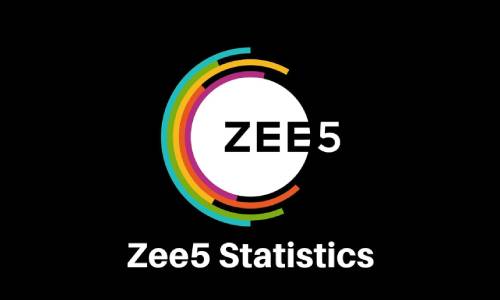OUR CLIENTS
WHY IS SEO IMPORTANT FOR FINTECH COMPANIES?
With the highly competitive fintech industry, having a strong online presence is crucial.
Some of the most important benefits of Fintech SEO are:
- Search engine rankings – By investing in SEO, fintech companies can improve their rankings and gain a higher visibility on search engines. This translates into increased brand awareness, website traffic, and potential leads for your fintech tool.
- Attract targeted organic traffic – By optimizing your website, you can attract highly targeted organic traffic that is more likely to convert into customers. This helps increase the overall conversion rate and improves your return on investment (ROI).
- Long-term traffic benefits – Unlike paid advertising, which stops generating traffic once the budget runs out, SEO efforts continue to yield results over time. By consistently optimizing website and producing valuable content, you can establish a strong online presence that continues to attract organic traffic and generate leads even in the long run.

KEY ELEMENTS OF FINTECH SEO
1.CONDUCT KEYWORD RESEARCH FOR YOUR FINTECH TOOL
Keyword research is the foundation of any SEO strategy.
By identifying the right keywords, you can optimize your website content to match the intent of your target audience better. (To better match the intent of your target audience.)
This helps search engines understand the relevance of your website to specific search queries, increasing the likelihood of your website appearing in relevant search results.
2. USE BEST ON-PAGE SEO PRACTICES TO OPTIMIZE PAGES
On-page SEO is a set of optimization tactics that you should implement on each page to improve your rankings.
Even simple tactics and small steps can boost search traffic to your fintech website.
To optimize your fintech website effectively, you must pay attention to on-page SEO factors.
This includes optimising page titles and meta description content on pages, URL structure, and incorporating relevant keywords throughout the content.
3. OPTIMIZE YOUR URL STRUCTURE
URL structure is another important on-page SEO factor.
Creating descriptive and keyword-rich URLs can improve the visibility of your fintech website in search results.
For example, instead of using a generic URL like “https://yourwebsite.com/page1,” consider using a more descriptive URL like: https://yourwebsite.com/fintech-software-solutions.
4. OPTIMIZE YOUR CONTENT FOR THE BEST PERFORMANCE
Even simple strategies can boost search traffic to your fintech brand.
Whether it’s a blog post, service page, or even the homepage, using on-page techniques is critical.
Furthermore, organizing your content with headings and subheadings enhances readability and signals to search engines the main topics covered on your page.
Here are some easy ways to do it:
- Make sure your page loads fast (faster)
- Place the target keyword in the first 100 words of content
- Have only one H1 heading per single page
- Place the target keywords in H2 headings where relevant
- Make a title and headings to be descriptive
- Create your content to be informative, readable and actionable
- Link to other pages on your website where possible
- Include a valid schema markup for your pages
Additionally, ensure that your content is well-structured, engaging, and includes relevant keywords to improve its search engine visibility.
By following these on-page optimization practices, you can ensure that your fintech website is easily discoverable by both, search engines and users.
5. OFF-PAGE SEO TECHNIQUES FOR FINTECH
Off-page SEO refers to the actions taken outside of your website to improve its search engine rankings.
This involves building high-quality backlinks from reputable websites, engaging in influencer marketing, and promoting your fintech tool on social media platforms.
These backlinks act as votes of confidence for search engines, indicating that your website is a trusted source of information.
By improving your website’s authority and credibility, off-page SEO techniques can boost your overall search visibility.
6. KEEP YOUR TECHNICAL SEO AT POINT
Technical SEO focuses on the technical aspects of your website to improve its crawling, indexing, and overall performance on search engines.
This includes optimizing your website’s loading speed, mobile-friendliness, XML sitemap, implementing structured data markup, etc.
7. CREATE A COMPREHENSIVE CONTENT STRATEGY
No one wants to read too technical, boring content full of fluff and unnecessary terms. And in the fintech niche, that’s quite common.
Developing a comprehensive content strategy is essential for fintech SEO success.
You can attract and retain your target audience by creating high-quality, informative, and engaging content that is easy to understand.
By consistently producing valuable content, you can position your fintech company as a thought leader in the industry and attract organic traffic to your website.
This includes creating blog posts, articles, whitepapers, and other forms of content that address your target audience’s pain points and challenges.
8. TRACK AND IMPROVE YOUR FINTECH SEO PERFORMANCE
Tracking your fintech SEO performance is crucial to understanding the effectiveness of your strategies and making necessary improvements.
Let’s explore key steps for tracking and improving your fintech SEO performance:
- Conversions tracking – Use Google Analytics to track conversions, such as form submissions, sign-ups, or downloads, and make sure to set up conversion goals to measure the success of your SEO efforts in terms of lead generation or revenue.
- Traffic Analysis – Analyze organic traffic sources and user engagement metrics in Google Analytics.
- Keyword Tracking – Monitor your target keywords’ rankings regularly using SEO tools like SEMrush, Ahrefs, or Moz and track how your rankings evolve over time to identify trends and opportunities.
- Content Performance – Identify high-performing and underperforming content on your website. Evaluate which pieces of content are driving the most traffic and conversions.
- Backlink Monitoring – Keep an eye on your backlink profile to ensure the quality and relevance of inbound links. Monitor for any toxic or spammy backlinks that may harm your SEO.
- Heatmaps and User Session Recording – Use tools like Hotjar or CrazyEgg to analyze user behavior on your website through heatmaps and session recordings.
9. UPDATE YOUR CONTENT REGULARLY
You should keep your website and blog up to date with fresh content.
Regularly publishing new articles, updates, and insights to show your expertise in the fintech industry will help you convert easier and keep visitors returning for more.
OTHER SEO SERVICES OFFERERD BY NEXT MOBI
Claim your 100% free REVENUE GROWTH strategy session with an experienced digital strategist valued at 2000AED.
We outline foolproof strategies for significantly increasing website traffic and revenue, even in difficult economic times.
FREQUENTLY ASKED QUESTIONS
What is SEO in fintech?
Basically, on-page SEO is a set of optimizations you can perform literally on the page that’ll improve that page’s search rank. Even simple strategies can boost search traffic to your fintech brand. Whether it’s a blog post, service page, or even the homepage, using on-page techniques is critical.
What is fintech in digital marketing?
Fintech marketing includes a compilation of marketing strategies designed only for fintech (financial technology) firms. These businesses are implementing innovative technology to enhance and eventually automate the supply and use of financial services to consumers.
What are the 3 categories of fintech?
Types of fintech and fintech products. Fintech covers a wide range of use cases across business-to-business (B2B), business-to-consumer (B2C), and peer-to-peer (P2P) markets. The following are just some examples of the types of fintech companies and products that are changing the financial services industry
What are the 5 D's of fintech?
At its core, guiding this evolution are the 5 D’s of fintech—Digitization, Disruption, Democratisation, Decentralization, and Data.
What is the fintech content strategy?
A content strategy for Fintech is a comprehensive plan that outlines how a financial technology company will create, distribute, and manage content to achieve specific business goals.














































